
Robert I, popularly known as Robert the Bruce, was King of Scots from 1306 to his death in 1329. One of the most renowned warriors of his generation, Robert eventually led Scotland during the First War of Scottish Independence against England. He fought successfully during his reign to regain Scotland's place as an independent kingdom and is now revered in Scotland as a national hero.

A listed building, or listed structure, is one that has been placed on one of the four statutory lists maintained by Historic England in England, Historic Environment Scotland in Scotland, Cadw in Wales and the Northern Ireland Environment Agency in Northern Ireland.
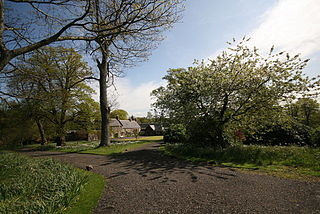
Cardross is a large village with a population of 2,194 (2011) in Scotland, on the north side of the Firth of Clyde, situated halfway between Dumbarton and Helensburgh. Cardross is in the historic geographical county of Dunbartonshire but the modern political local authority of Argyll and Bute.

Renton is a village in West Dunbartonshire, in the west Central Lowlands of Scotland. In the 2001 National Census it had a population of 2,138.
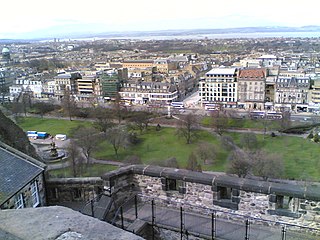
The New Town is a central area of Edinburgh, the capital of Scotland. It was built in stages between 1767 and around 1850, and retains much of its original neo-classical and Georgian period architecture. Its best known street is Princes Street, facing Edinburgh Castle and the Old Town across the geological depression of the former Nor Loch. Together with the Old Town, and West End, the New Town was designated a UNESCO World Heritage Site in 1995. The area is also famed for the New Town Gardens, a heritage designation since March 2001.

Cardross railway station is a railway station serving the village of Cardross, Scotland. The station is 19 miles (31 km) north west of Glasgow Queen Street on the North Clyde Line positioned on the banks of the north side of the river Clyde. The station is managed by ScotRail. The station has two platforms and a footbridge as well as a level crossing mainly used by the nearby sawmill.

Clan Napier is a Lowland Scottish clan.
Abercrombie is a village in Fife, Scotland.

Robert Alexander Allan, Baron Allan of Kilmahew, was a British Conservative politician.
DoCoMoMo Key Scottish Monuments is a list of 60 notable post-war buildings in Scotland, compiled in 1993 by the international architectural conservation organisation DoCoMoMo.
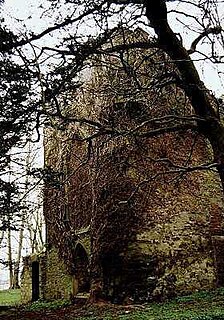
Kilmahew Castle is a ruined castle located just north of Cardross, in the council area of Argyll and Bute, Scotland. The castle is close by the ruins of St. Peter's Seminary. Also close by is Kilmahew Burn. Kilmahew is named after its patron saint, Mochta (Mahew).
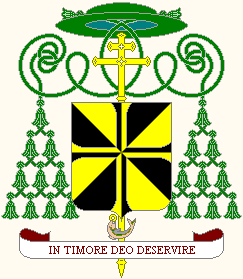
Donald Alphonsus Campbell (1894–1963) was a Scottish prelate who served as the Roman Catholic Archbishop of Glasgow from 1945 to 1963.

Geilston Garden is a property of the National Trust for Scotland, north-west of Cardross, Argyll and Bute.

St. Peter's Seminary is a former Roman Catholic seminary near Cardross, Argyll and Bute, Scotland. Designed by the firm of Gillespie, Kidd & Coia, it has been described by the international architecture conservation organisation DOCOMOMO as a modern "building of world significance". It is one of only 42 post-war buildings in Scotland to be listed at Category A, the highest level of protection for a building of "special architectural or historic interest". It has been abandoned since 1987, and is currently in a ruinous state. In July 2020, the site was gifted to the Kilmahew Education Trust Ltd who plan to reinstate the educational elements of the Seminary Complex after a process of conservation and restoration. The wider Kilmahew Estate is to be brought back to its former glory with new landscaping and features but is currently closed to the public due to safety concerns.

Bearsden Academy is a non-denominational, state secondary school in Bearsden, East Dunbartonshire, Scotland.

St Mary's College, Blairs, situated near Aberdeen in Scotland, was from 1829 to 1986 a junior seminary for boys and young men studying for the Roman Catholic priesthood. Part of the former college now houses Blairs Museum, the museum of Scotland's Catholic heritage. The New Chapel is a Category A listed building, with the other buildings listed as Category B.
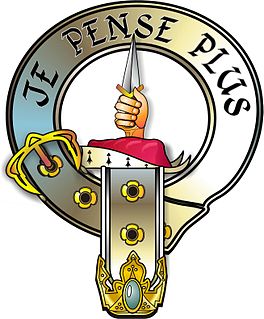
Henry Erskine, third Lord Cardross, was a covenanter.
William Dunlop was a Covenanter, adventurer, and Principal of the University of Glasgow from 1690 to 1700. According to Howe, William Dunlop was the first Presbyterian minister in South Carolina.
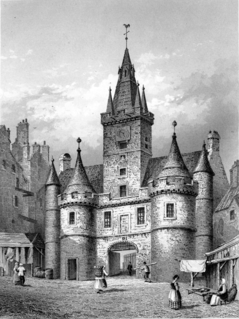
John King was an outlawed minister of the Covenant, chaplain at one time to Lord Cardross, but seized by Claverhouse among the insurgents after the affair at Drumclog. King was taken to Edinburgh along with another preacher named John Kid. They were each subjected to torture, condemned to death, and executed. Following his death King's head and limbs were displayed at the Netherbow Port on Edinburgh's Royal Mile beside James Guthrie's skull.
















